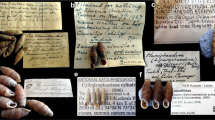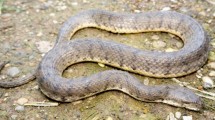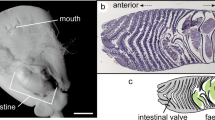Abstract
THE land snail Helix aspersa lays up to 100 eggs at a time, each with 0.6 mg of calcium in the form of calcite crystals. There is insufficient calcium in any part of the reproductive tract to account for this.
This is a preview of subscription content, access via your institution
Access options
Subscribe to this journal
Receive 51 print issues and online access
$199.00 per year
only $3.90 per issue
Buy this article
- Purchase on Springer Link
- Instant access to full article PDF
Prices may be subject to local taxes which are calculated during checkout
Similar content being viewed by others
References
Tompa, A. J. Morph. 150, 861–888 (1976).
Tompa, A. Malac. Rev. 7, 49–50 (1974).
Tompa, A. thesis, Univ. Michigan (1974).
Tompa, A. Nature 255, 232–233 (1975).
Romanoff, A. The Avian Egg (Wiley, New York, 1949).
Simkiss, K. Calcium in Reproductive Physiology (Reinhold, New York, 1967).
Author information
Authors and Affiliations
Rights and permissions
About this article
Cite this article
TOMPA, A., WILBUR, K. Calcium mobilisation during reproduction in snail Helix aspersa. Nature 270, 53–54 (1977). https://doi.org/10.1038/270053a0
Received:
Accepted:
Issue Date:
DOI: https://doi.org/10.1038/270053a0
This article is cited by
-
Phenotypic plasticity in the common garden snail: big guts and heavier mucus glands compete in snails faced with the dual challenge of poor diet and coarse substrate
Journal of Comparative Physiology B (2017)
-
Pallial oviduct of Pomacea canaliculata (Gastropoda): ultrastructural studies of the parenchymal cellular types involved in the metabolism of perivitellins
Cell and Tissue Research (2006)
-
Haemolymph ionic concentration in freshwater gastropods: A comparative study
Comparative Haematology International (1995)
-
Studies on Ca2+-accumulating vesicles in oocytes of the snail Helix aspersa
Cell and Tissue Research (1989)
-
pH and calcium concentration changes in a molluscan egg during development
Experientia (1979)
Comments
By submitting a comment you agree to abide by our Terms and Community Guidelines. If you find something abusive or that does not comply with our terms or guidelines please flag it as inappropriate.



